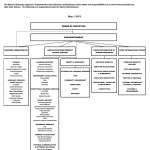A bold and resourceful way to address the issues facing a Majority-Minority School District is to propose to the school board that they hire an Associate Superintendent of Educational Equity that reports directly to them.
The latest enrollment numbers shows the Salt Lake City School District with a student population of 24,723 students, ethnic minority student’s account for 57% of that number. Yet there is reluctance on the district’s part to address the unique issues facing our students of color.
I draw that conclusion from my own experience; my second month on the board (February 2013), I asked that we explore the reasons for the high turnover rate of teachers in Title I Schools. That request fell on closed ears and I was compelled to file a complaint with the U.S. Department of Education Office for Civil Rights.
This past month I questioned why the ethnic minority parents from my neighborhoods were not allowed to participate in the principal selection process, yet the district is allowing eastside parents to participate in the selection process. Again, there is currently no will on the district level to redress that wrong.
Clearly, all is not well, as some view the district’s increasing diversity as a problem rather than an opportunity. As demonstrated on my blog, there are numerous instances where acting in my role as an elected member of the Salt Lake City Board of Education, I have raised a warning voice about the district’s neglect of the ethnic minority student /parent population in the Salt Lake City School District. The truth of the matter is, our diversity-enhanced school district will continue experiencing rapid growth in the number of students of color and culturally and linguistically diverse students.
Over the past five months, I have had multiple private and group meetings about ways to address the issues facing a rapidly changing district. Two major meetings have occurred in the past month, the City Weekly reported on one of them:
“Salt Lake City School Board member Michael Clara represents the Glendale neighborhood. He had already organized a meeting with the Latino community and the United States Department of Justice about the inequities of the school district…” (Community Searches For Answers In Courtroom Shooting Of Siale Angilau, City Weekly – 05/07/14)
The other meeting occurred yesterday, with the reconvened Equity Leadership Team at the Salt Lake City School District.
Here is the invitation of for that meeting: ELT Invitation
Here is the agenda for that meting: ELT AGENDA
The conclusions reached at these meetings, are that as a school district with rapidly transitioning schools, a permanent ethnic minority advisory group, chaired by a community member that reports directly to the school board on a consistent and regular basis needs to be established. This committee would work within the office of the newly established Associate Superintendent of Educational Equity.
This will allow us to reexamine everything we’re doing. Continuing with business as usual will mean failure or mediocrity for too many of our students, as the data related to racial, cultural, linguistic, and economic achievement gaps demonstrate. Rapidly changing demographics demand that we engage in a vigorous, ongoing, and systemic process of CHANGE in order to function effectively in this highly diverse environment.
Many community and education leaders in our diversity-enhanced schools want to move beyond blame and want to continue the work to transform our district to serve all their students well. I am convinced that he will see rapid change and get on the path to collaboration if the school board will take the bold step of elevating the current position of Assistant Superintendent (same level of a school principal) Kathleen Christy, to that of Associate Superintendent of Educational Equity. Creating this new position demonstrates the school district’s commitment to addressing the unique unmet needs of 57% of our current student population.


